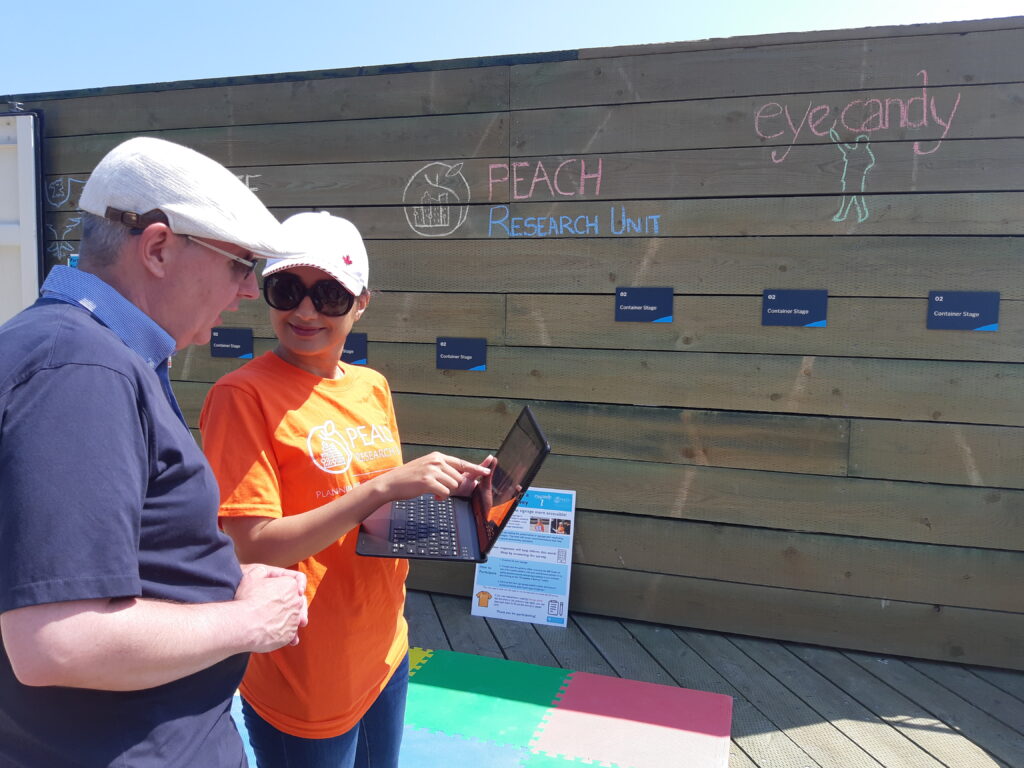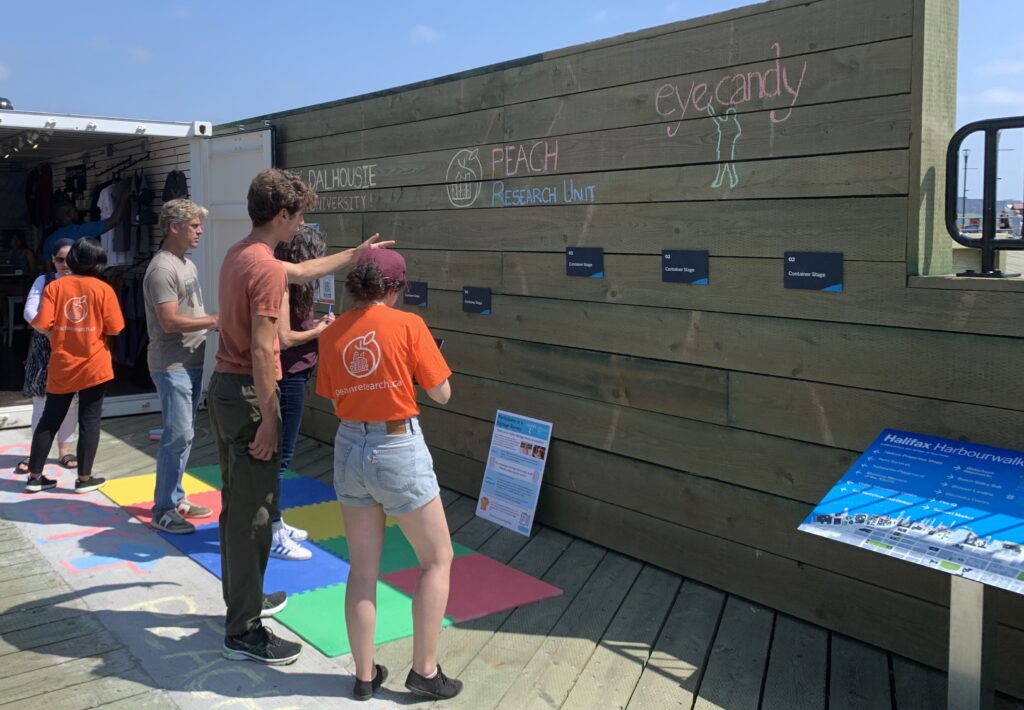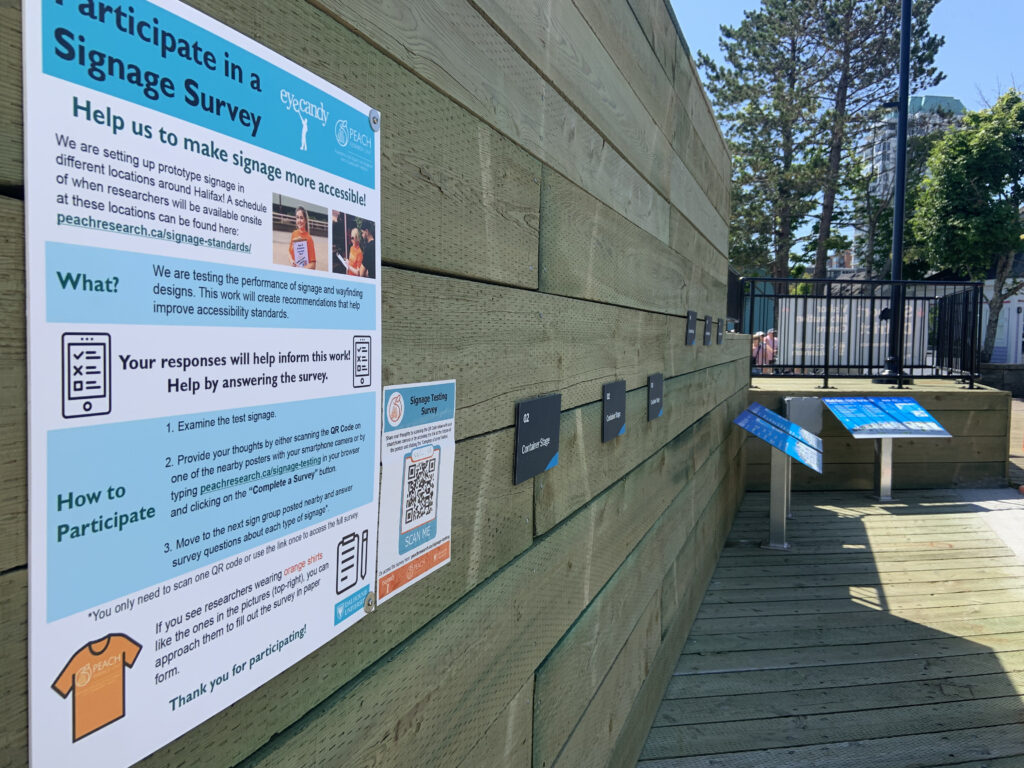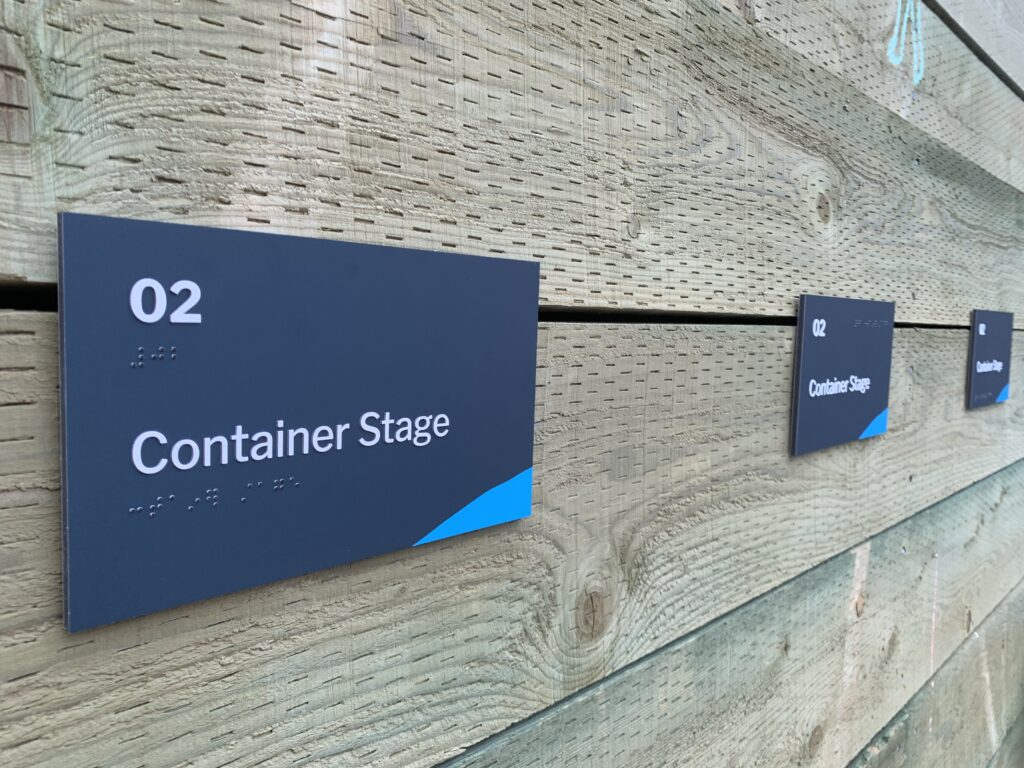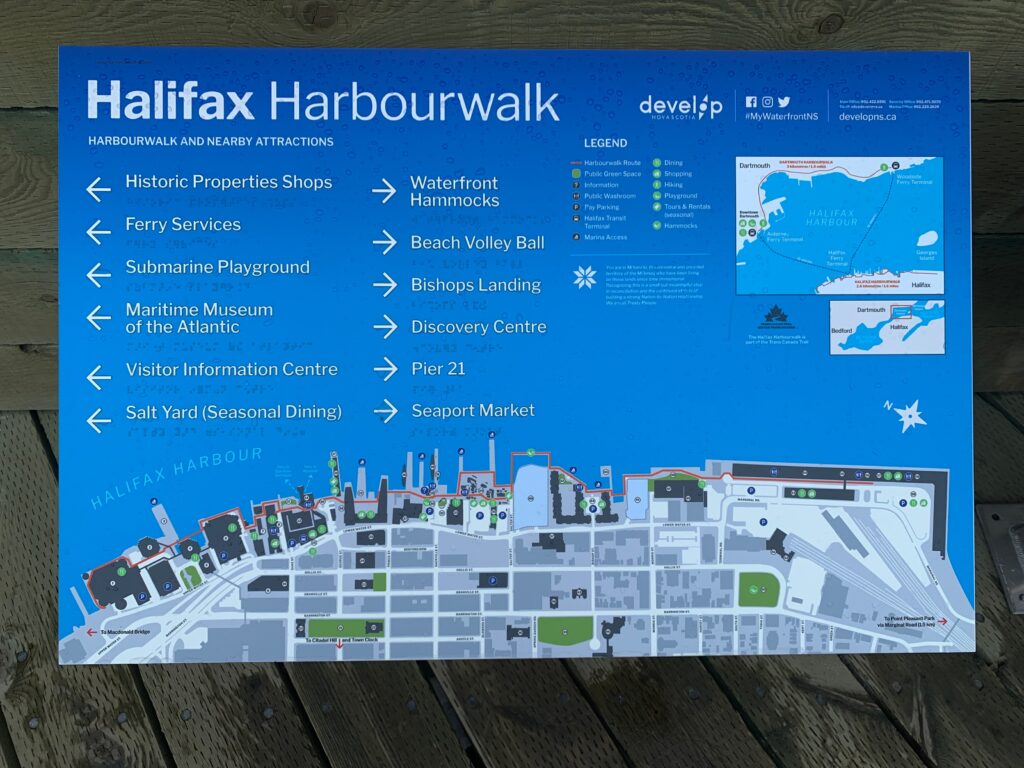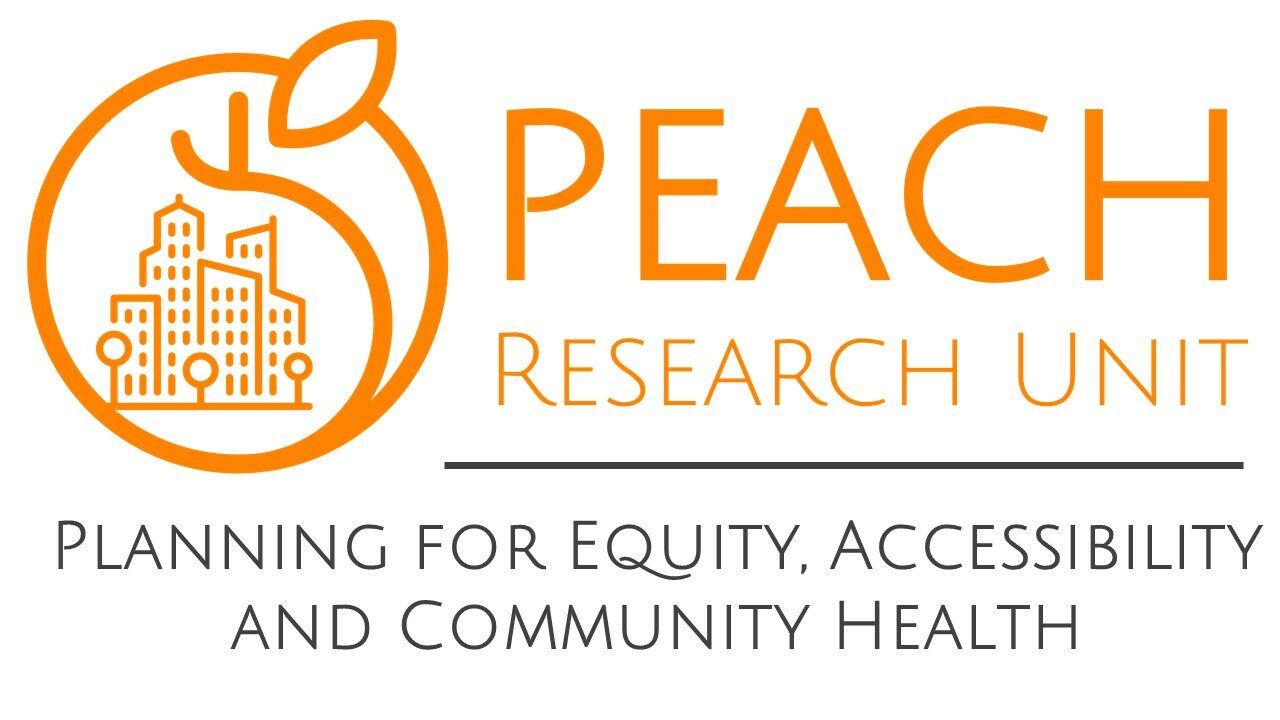Testing Accessible Signage Standards

“Advancing Communication through Signage and Wayfinding”: A partnership project
Signage is an essential tool used for the identification and navigation of the built environment – a process that is sometimes called, wayfinding. Yet despite over six million Canadians identifying as living with one or more disabilities, accessible signage design is understudied with little existing research to help enhance the standards.
In Canada, the Canadian Standards Association (CSA) B651-18 document includes recommendations for the design of accessible signage, such as the minimum mounting height of signage, minimum text size, braille specifications, and tactile markings. However, there is a gap in empirical evidence that tests the efficacy of these standards.
In the summer of 2022, PEACH Research Unit and eyecandy SIGNS INC. of Halifax, Nova Scotia, teamed up to fill part of this gap by examining and testing signage design standards from the experience of people who use them. This study tested three design attributes through a series of interactive public installations withprototype signage in locations around Halifax, Nova Scotia. The three attributes of signage accessibility that were tested are:
• the mounting height of wall signage from the finished floor surface,
• the placement of braille within a sign’s content relative to other content, and
•the legibility of print characters from a distance.
Original data was collected through survey questionnaires, completed by 223 respondents who were of various age and gender, and had different types and levels of disability experience (n=78, 35%).
Results found a majority of respondents preferred sign mounting heights, and character heights relative to viewing distance, that were consistent with current Canadian standards. However, qualitative responses from users with and without disabilities suggests that the standards may benefit from additional criteria that considers different sign types or contextual elements alongside specific measurements for signage. These include incorporating height ranges for overhead signage, circumstances where multiple signs might be appropriate, and developing standards related to map signage.
Responses from braille users suggest that the optimal placement of braille on a sign may also differ by sign type, with considerations being different between signs with little content, signs with a lot of content, and maps or signs with navigational information.
It is necessary to establish stronger evidence for the effectiveness of each of the existing standards, critically examining how surrounding environment and a wide range of user abilities together shape the design requirements.
